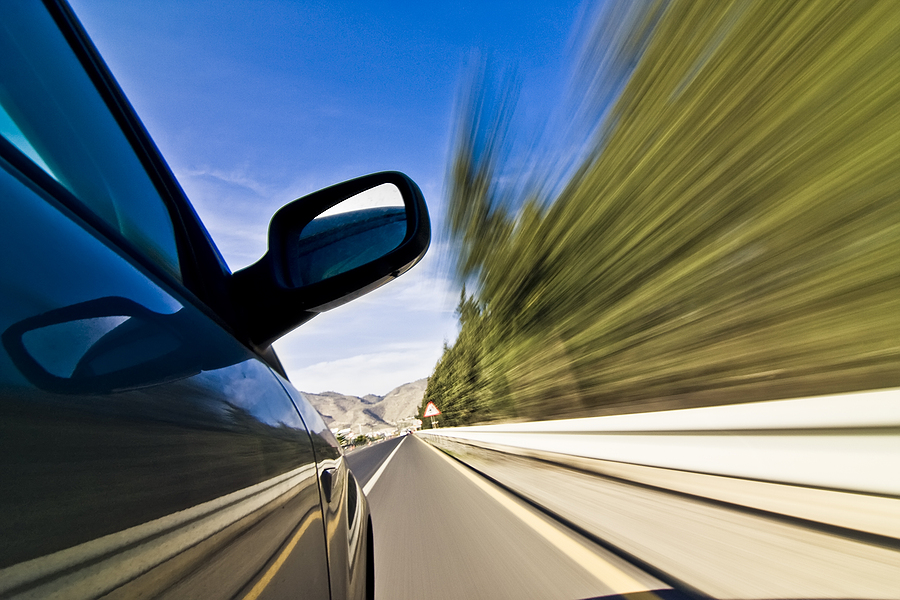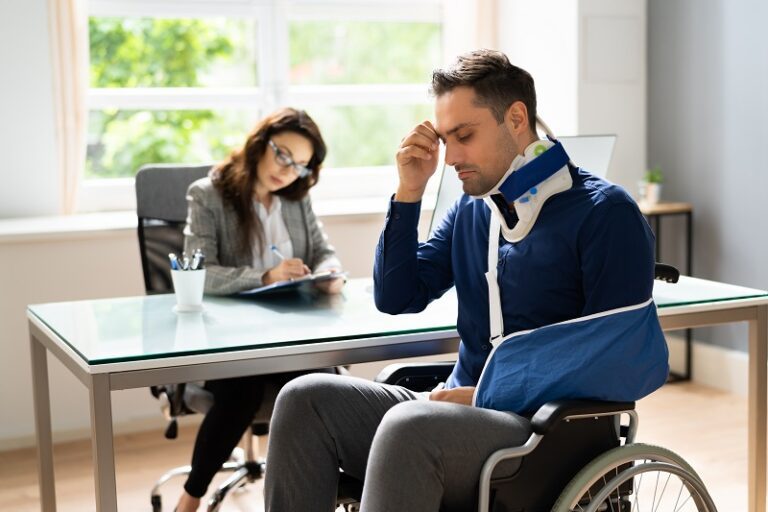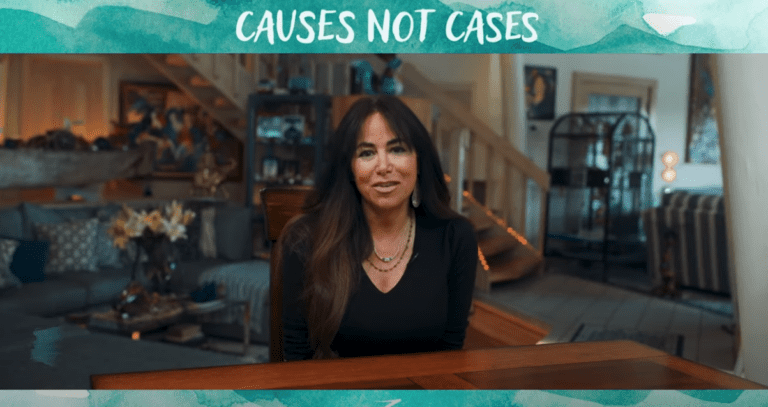 Speeding is not typically a direct cause of a traffic accident, but it factors into many traffic accidents in San Diego and throughout the nation. Speeding creates an environment where vehicles are more likely to crash, and drivers are more likely to suffer severe or fatal injuries.
Speeding is not typically a direct cause of a traffic accident, but it factors into many traffic accidents in San Diego and throughout the nation. Speeding creates an environment where vehicles are more likely to crash, and drivers are more likely to suffer severe or fatal injuries.
Below we take a closer look at the relationship between speeding and traffic accidents. We will offer specific information about speeding-related accidents and injuries in San Diego, the dangers of speeding, and why drivers feel the need to speed. For information about your legal options after an accident involving speeding, contact a car crash attorney today.
Drivers Can Speed Without Exceeding the Posted Speed Limit
If you have ever received a speeding violation, it was likely for traveling over the posted speed limit. Similarly, if you or a loved one suffered injuries in a San Diego speeding accident, the at-fault driver was likely exceeding the posted speed limit.
In California and throughout the United States, the posted speed limit is the maximum speed a driver can legally operate their vehicle on the road. However, the posted speed limit is not always the safest speed to operate a vehicle. California law recognizes this fact with two different sets of speeding laws: absolute speed limits and prima facie speed limits.
Absolute Speed Limits in California
Throughout San Diego, drivers must comply with California’s absolute speed limits.
Absolute speed limits vary based on the type of road. However, most streets, roads, and highways have one of the following limits:
- Maximum of 70 miles per hour on interstates and most highways.
- Maximum of 65 miles per hour on freeways and highways that are not marked for 70 miles per hour.
- Maximum of 55 miles per hour on undivided and two-lane highways that are not otherwise marked.
A driver who exceeds these speeds is automatically in violation of California law.
Prima Facie Speed Limits in California
California speed limits that are not absolute are referred to as prima facie speed limits. Unless otherwise posted, California prima facie speed limits are:
- 15 miles per hour while driving through alleys, crossing railroad tracks, and approaching intersections with poor visibility.
- 25 miles per hour in residential areas, business districts, and school zones.
Drivers who exceed prima facie speed limits in San Diego are not necessarily speeding or breaking the law, depending on the situation.
California’s General Speed Law
The same way a driver might not be speeding when exceeding a prima facie speed limit, they can be guilty of speeding when they do not exceed a posted speed limit. Under California law, drivers must operate their vehicles at reasonable and prudent speeds that take weather, visibility, traffic, road conditions, and the safety of others under consideration.
California’s courts have identified situations where drivers might be traveling too fast but not driving over the posted speed limit.
They include:
- Crowded urban and residential areas, especially when pedestrians, cyclists, and small children are present.
- Animals are present, which is not as frequent of an issue in San Diego.
- Drivers are proceeding through a railroad crossing.
- Slippery or wet roads.
- Drivers have an obstructed or limited view.
- Excessive light or sunlight.
- Traveling over a hill.
When a traffic accident occurs in San Diego, law enforcement has discretion whether to issue a speeding ticket. Even if the police do not give out a citation, it does not always mean the accident was not speed-related. An experienced car accident attorney can consult with experts to determine how speed played a role in your car accident, building a strong case against an at-fault driver.
What Makes Speeding so Dangerous?
Although the exact number varies from year to year, the National Highway Traffic Safety Administration (NHTSA) estimates that approximately 25 percent of fatal traffic crashes across the nation occur because of speeding. If the same percentage holds, more than 1,200 people die each year in San Diego County because of speed-related traffic accidents. California’s crash data does not separate speed-related fatalities from injuries.
Yet, the statistics still tell a sad story. San Diego County’s crash data reveals approximately 20,000 crashes each year result in injuries or fatalities. Approximately 24 percent, or almost 5,000 traffic accidents, are speed-related.
These startling statistics reveal the potential consequences of speeding, but why does speeding lead to so many injuries and fatalities in San Diego? The following elements make speeding one of the most dangerous driving habits:
Speeding Reduces Reaction Time
Safely operating a motor vehicle means processing signs, signals, hazards, and other information and reacting to that information promptly. The average driver decreases their reaction time when they speed. A decrease in reaction time makes it less likely a driver will react appropriately to unexpected information they encounter on the road. On San Diego’s busy roads, speeding drivers need to pay special attention to the actions of other drivers, pedestrians, and cyclists. Additionally, the city’s busy intersections also require drivers to process information rapidly. Speeding drivers who cannot react quickly put others at risk for accident and injury.
Speeding Makes it More Difficult to Control Vehicles
Losing control of a vehicle often leads to treacherous traffic accidents. Speeding sometimes causes drivers to lose control, even when they are trying to drive safely. Driving requires manual dexterity, and excessive speed makes vehicles highly sensitive to quick movements. This requires more manual strength to keep a vehicle on the road. Truck drivers and drivers who operate other large vehicles are especially at risk of losing control because their rigs have high centers of gravity. Going too fast around a curve moves the center of gravity and can cause a loss of control.
Loss of vehicle control is also related to reduced reaction time that occurs because of speeding. Drivers who encounter a hazard on the road cannot easily avoid it when they are speeding. If they try to make a rapid movement or slam on their brakes, drivers risk losing control of their vehicle, potentially causing a serious or fatal car accident.
Speeding Vehicles Require More Distance for Stopping
The higher the speed a vehicle travels, the more time it needs to slow down or come to a complete stop. Reaction time and braking distance make up a vehicle’s total stopping distance. Reaction time refers to the distance a driver needs to take in information and for the brain to send a message for the driver to stop or slow down. Braking distances is the distance a vehicle needs to come to a complete stop once a driver begins to slow down. Semi-trucks, RVs, and other large vehicles have a longer braking distance.
For example, an 18-wheeler needs about 720 feet to come to a complete stop, while most passenger vehicles need a little more than 200 feet to stop when traveling at 65 miles per hour. Drivers who comply with the posted speed limit and take special care during heavy traffic and poor road conditions have a higher chance of avoiding an accident if they suddenly need to stop.
Speeding Increases the Force of a Crash Upon Impact
Even when speeding is not the primary cause of a car accident, it still plays a role in the severity of the accident because of the force of a crash upon impact. Simple physics shows us that speed increases the force of a collision—force equals mass times acceleration (F=ma). Increased force leads to more property damage, more severe injuries, and a higher chance of death. Semi-trucks and other large vehicles pose an even greater danger when speeding. The massive weight of large vehicles coupled with speed makes for treacherous outcomes when a collision occurs. The most dangerous speed-related accident is two heavy trucks or other vehicles crashing when excessive speed is involved.
Speeding Reduces Protection Offered by Safety Devices
Today’s vehicles come standard with airbags and seat belts to mitigate the impact of a traffic crash. Auto manufacturers regularly perform tests to find the optimum speeds for these safety features to be the most effective. Each car, truck, and other passenger vehicle have slightly different optimum speeds. However, going over the recommended maximum speed reduces the effectiveness of safety devices in all vehicles. In some cases, drivers and occupants suffer injuries from seat belts and airbag deployments; injuries are far worse at high speeds.
What Motivates Drivers to Speed?
The National Highway Traffic Safety Administration (NHTSA) spends time and money studying speeding. The more they learn about driver behaviors and what motivates speeding, the better chance they have of creating and promoting regulations that keep the roads safer in San Diego, throughout California, and throughout the nation. In their research, they conducted several focus groups to gain insight into drivers’ attitudes, beliefs, and behaviors regarding speeding. During the focus groups, drivers identified several factors that led them to increase their speed. They include:
Situational Factors
Many situations can impact whether a driver chooses to speed. Drivers running late for work, school, or an appointment are more likely to speed, while drivers who are simply traveling on a loose schedule do not feel the need. Trip length and driving environment are other situational factors that motivate some drivers to speed.
Some drivers choose to speed on long trips because they have the chance to make up travel time, something that is not possible on short trips that involve more traffic and stop lights. Rural environments also make it easier for people to speed because there are no people or police around. This is certainly not the case for San Diego drivers.
Social Pressure
Some drivers feel social pressure from other vehicles that share the road. In many cases, drivers want to keep up with the flow of traffic, even if that means going over the speed limit. This is especially a factor in carpool lanes, like the I-15 express lanes between Escondido and San Diego. Drivers who go the speed limit have drivers behind them stack up, so they feel the need to go faster. Instead of moving over into slow traffic, drivers give in to the pressure and speed up. Drivers keeping up with the flow of traffic also worry less about getting a speeding ticket. In fact, some drivers feel protected from citations when everyone else around them is speeding too.
Inattention to Speed
Another factor that sometimes motivates drivers to speed is inattention. Drivers who do not pay attention to their speed sometimes travel over the speed limit. The chances of inattentive speeding increases with high traffic flow, vehicles with powerful engines, and driver distractions, such as music. Focus group members in the NHTSA study mentioned they easily found themselves driving 15 to 20 miles per hour over the speed limit without awareness when keeping up with the flow of traffic.
Drivers also shared that they were inattentive of their vehicle’s speed if they switched vehicles throughout the day or week. For example, someone might take their spouse’s fast sports car when they are used to driving the family sedan, making it difficult to notice speeding in some cases.
Feelings About Speeding
Some drivers enjoy speeding because it makes them feel good. The NHTSA attributes these feelings to thrill-seekers and others who constantly seek some type of sensation. Some focus group drivers simply enjoy the rush of taking risks behind the wheel, which often includes driving over the speed limit or faster than what is safe for road and traffic conditions.
Focus group members revealed the previous motivations for speeding, but previous NHTSA research also explored driver motivations. Psychologists and other scientists confirm many motivations discussed above, but they also discuss a smaller group of speeders driven by habit and recklessness. Some drivers speed because they have created a habit and have never had a stronger motivation to follow the law, such as being involved in a severe speed-related accident. Others have extreme disregard for the law and the safety of others.
Regardless of the motivations for speeding, it is dangerous and sometimes has disastrous consequences for everyone who shares San Diego’s roads and highways. If a reckless speeder injured you, a car accident lawyer can help you recover compensation. You can get a free claim consultation at any time from most San Diego car accident lawyers. Call one today.







